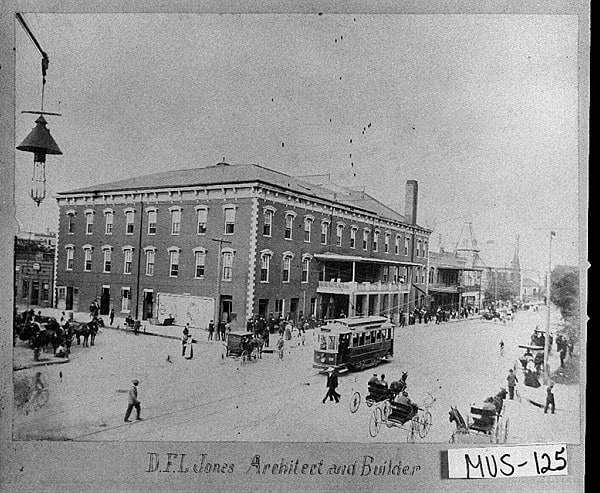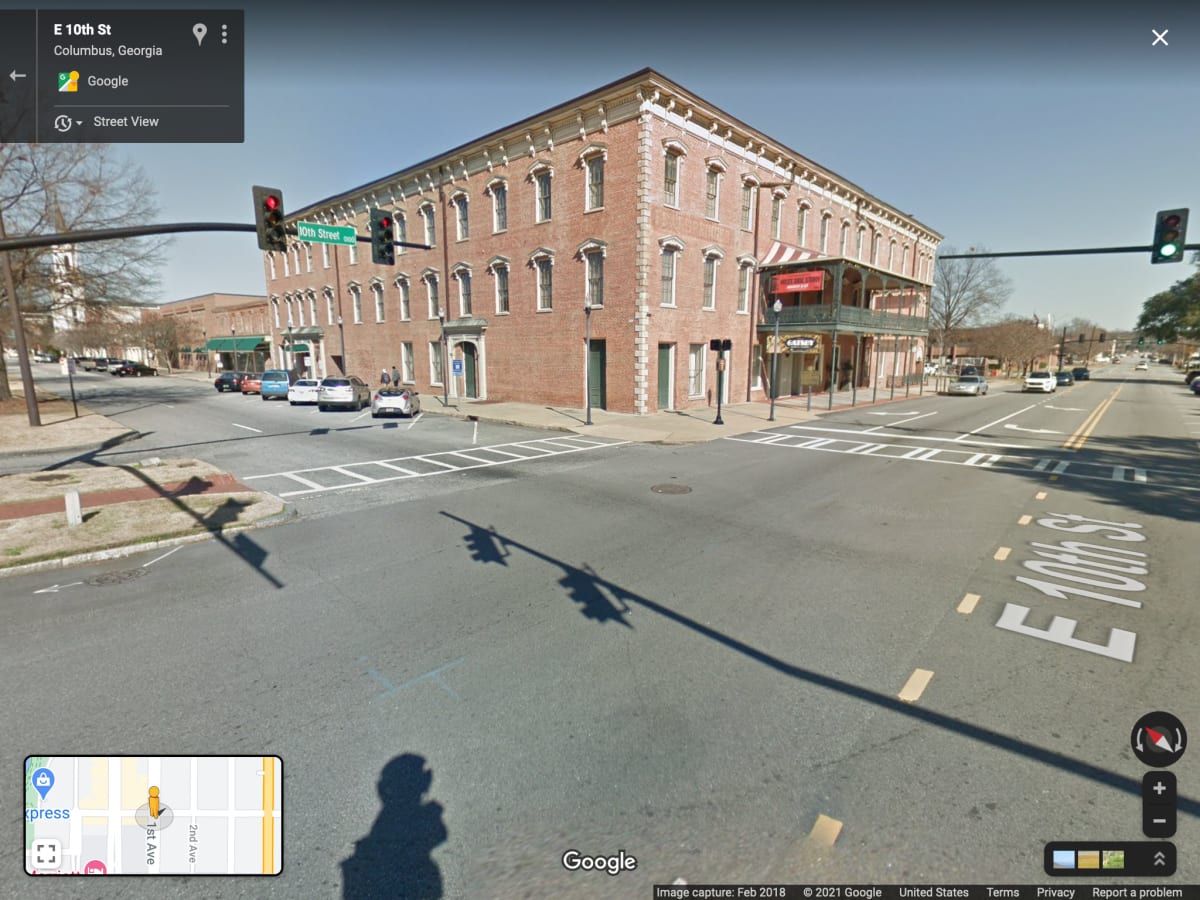Your town used to be walkable
It probably seems that your city must have always been built around interstates and parking lots. You may even have difficulty imagining that your city could ever function without cars. But that’s a modern myth. The truth is that your town used to be walkable, and it could be walkable once again.
Strong Towns published a piece recently called “Dallas Used to be Walkable,” in which they share a film recorded in downtown Dallas in 1939. It shows streets bustling with people on foot. They’re going to homes, restaurants, and businesses. It’s unrecognizable as the Dallas we have today.
This reminded me of when I shared a photo of my city, Columbus Georgia, from 1900. Here it is again, courtesy of the Digital Library of Georgia:
Now compare it to what that intersection looks like today:
A corner that once saw carriages, trolleys, bicycles, and people is now only home to cars. This isn’t to romanticize the past (I doubt many of us want to bring back horse-drawn carriages) but look at how diverse the mobility options were over a century ago compared to now. Our city used to be alive with people, and now it’s a giant parking lot for cars.
In the 50s and 60s, people thought maximizing car infrastructure was the way to the future. The article about Dallas quotes its mayor at the time: “Dallas will never be a modern city as long as it is tied to an antiquated, electric rail system.”
Now we live in that future, but we don’t have to stay trapped in it. If people in the 50s could raze neighborhoods to build parking lots and interstates, then we can build neighborhoods back at human scale like they were before.


